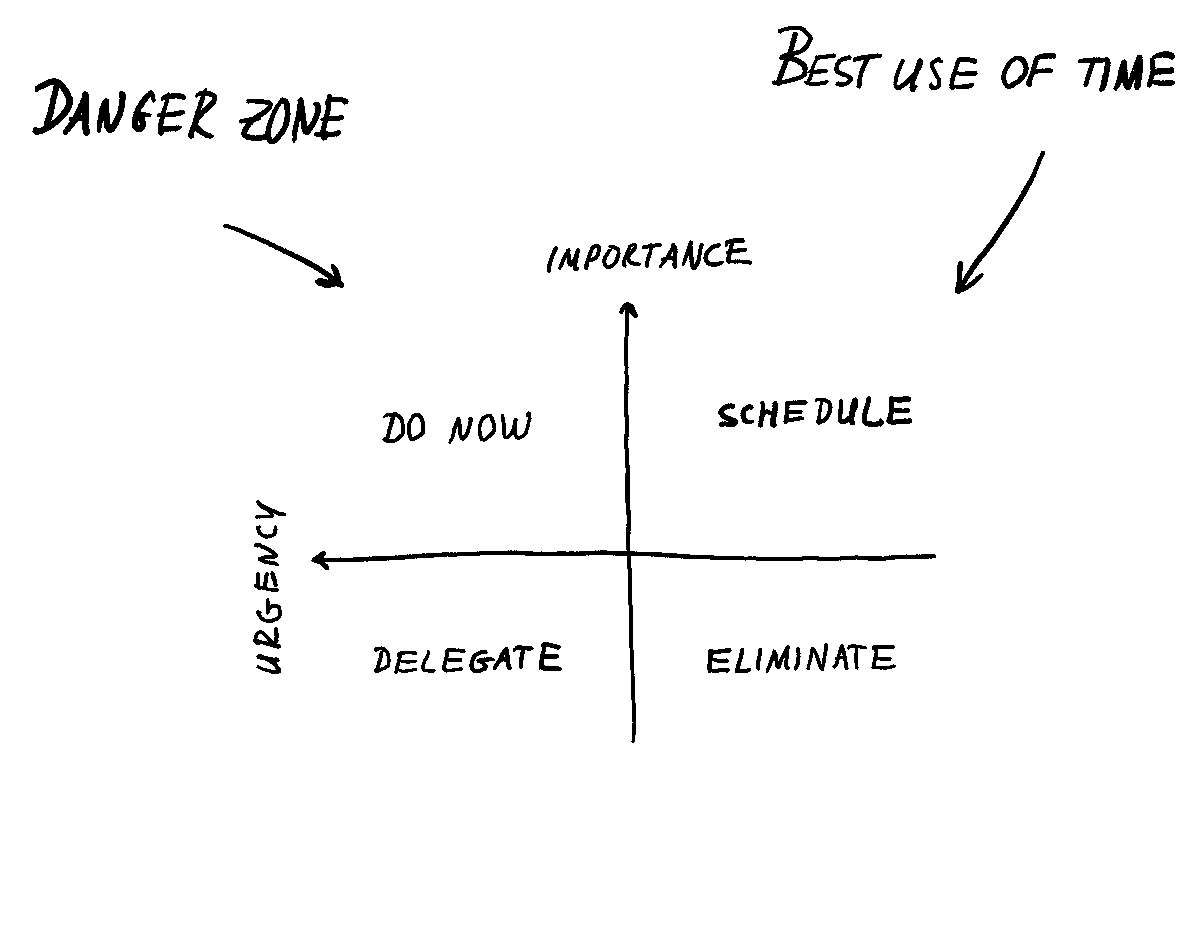The Eisenhower matrix
The Eisenhower matrix, sometimes known as the priority matrix, is an invaluable planning tool, and something I have been consistently using for the better part of the last decade.
As someone who has a short attention span and easily gets overwhelmed, I find Eisenhower matrix to be an invaluable tool in allowing me to focus on what’s important, rather than what’s right in front of me.
Oh, I still struggle to make sure that things that are important to me are what matters to others, but that’s a whole different battle - at the very least I’m able to keep my own head straight, and that’s a win in my book.
Without any further ado, I present to you the decision making framework developed and popularized by Dwight D. Eisenhower, the 34th president of the United States (and clearly a notorious efficiency nut).

It’s pretty simple, really. Take everything from your long single-file To-Do list, and place it on the matrix based on its urgency and importance. Work through the matrix in the following order:
- Urgent and important: get these done, now.
- Important, but not urgent: decide when you want to do these, actively make time for yourself to work on those.
- Urgent, but not important: delegate (read on below if you have no one to delegate to).
- Not urgent and not important: take time to eliminate these tasks.
Do now: a common pitfall
It’s easy to throw everything into the “urgent and important” pile. In reality, that’s not often the case. If you find yourself throwing everything in the first quadrant - I implore you to think of your tasks in relative terms. Out of everything on your mind, I’m sure some things are more important than others.
I find that over time most of my work shifts into a single quadrant (usually the “important, but not urgent”), and I find it helpful to redistribute those, or populate the matrix from scratch.
Schedule: mindful use of time
One of the goals of the Eisenhower Matrix is to increase visibility into how you spend your time. While it’s easy to spend most of the time in the “urgent and important” quadrant, the best work happens in the “important, but not urgent” section of the matrix. That’s where the best use of your time is, and that’s where most of the energy and attention should be spent.
Otherwise you’re just running around like a chicken with its head cut off, although I can sympathise with the difficulty of getting out of the urgency trap. It’s not trivial, and probably downright impossible in some cases.
This is where the biggest pitfall of the Eisenhower matrix lays in my experience. You want to maximize amount of time spent in the “schedule” quadrant, but you don’t want to end up with a massive list that becomes a yet another To Do list, because one dimensional To-Do lists suck.
Delegate: to whom?
Not everyone has someone to delegate work to. Or not everything can be delegated. In these cases, I treat the “delegate” bucket the same as “eliminate”. Hopefully that won’t come back to bite me in the future.
Eliminate: it’s hard
I really like following up on things, to a fault. I don’t like leaving loose ends, unanswered emails, or unspoken expectations. I find it helpful to schedule time to explicitly eliminate certain work, and communicate explicit expectations to everyone around me about that. Because of that, that’s where the most of my procrastination happens. Telling people “no” isn’t always easy, and I still don’t have the best process for combing through the “Eliminate” quadrant.
I know many people are a lot more comfortable letting unimportant things quietly fall through the cracks, and there’s nothing wrong with that.